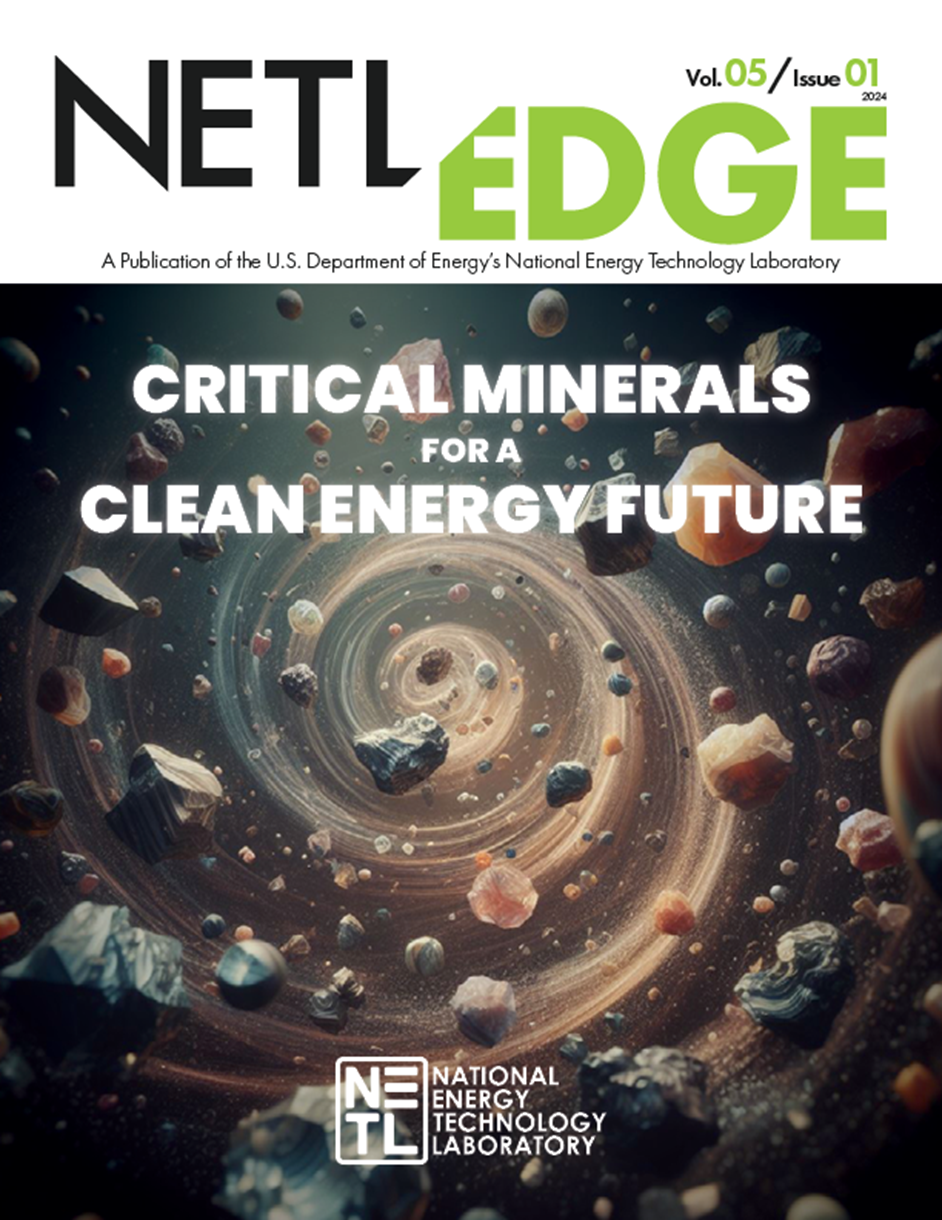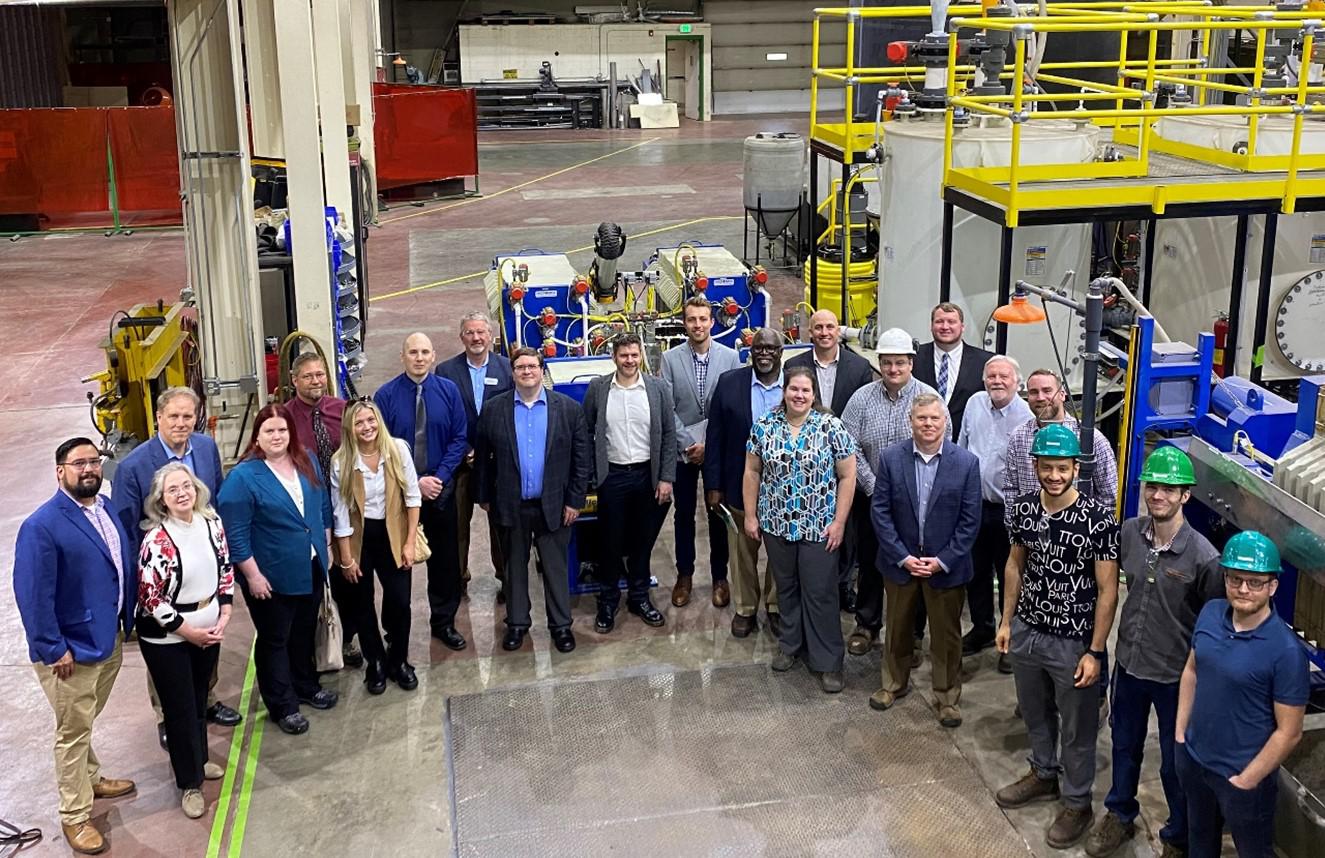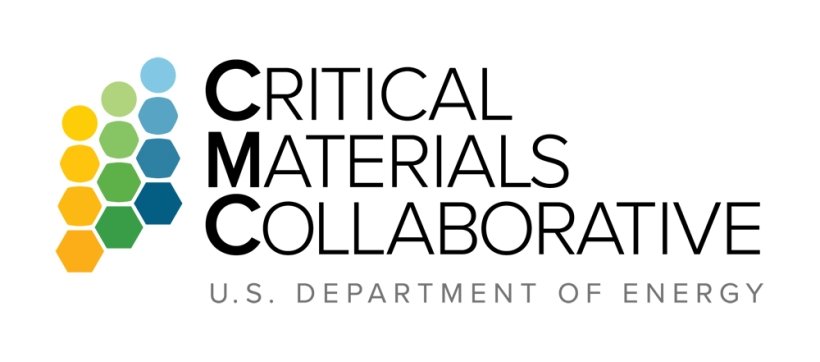Critical Minerals and Materials
The Critical Minerals and Materials (CMM) Program aims to rebuild U.S. leadership in extraction and processing technologies for the production of critical minerals and materials (CMM) that include rare earth elements (REE), critical minerals (originally defined by the U.S. Geological Survey [USGS]), and materials deemed critical by the Department of Energy (DOE), from secondary and unconventional resources to support an economical, environmentally benign, and geopolitically sustainable U.S. domestic supply chain.
Unconventional CMM resources include any resource from a geologic or secondary byproduct host that is distinctive from the mechanisms resulting in conventional, established deposits. Unconventional CMM can be sourced from in situ geologic deposits or from secondary byproducts of anthropogenic processes. These sources require revised or new methods and models to characterize and assess that focus on the unique source and temporal controls resulting in these deposits.
Examples of secondary and unconventional resources include:
- Sedimentary deposits such as coal, black shale, tonsteins (clay-altered volcanic ash), coal underclays, and marine phosphates.
- Secondary byproducts derived from mining and fossil-energy related waste streams such as produced water, coal fly ash, acid mine drainage, and alloy production residues.
The NETL CMM Program is focused on the following goals:
- Validate the technical and economic feasibility of domestic small pilot-scale facilities to produce high-purity CMM from carbon ore and coal-based resources.
- Produce 1–3 tonnes/day of high-purity mixed rare earth oxides/salts in domestic demonstration-scale facilities and refine to metals or alternative user-specified products as required for use in the CMM supply chain using coal-based and alternative resources as feedstock materials.
- Perform a regional assessment and production of CMM and novel high-value, nonfuel carbon-based products covering the entire United States.
As a fully integrated RD&D program, DOE-NETL’s efforts uniquely span basic and applied science and technology development (e.g., technology readiness level (TRL) 1-3), through engineering design, construction, and operation of bench- and small pilot-scale separation facilities (TRL 3-5), to development of process designs and operation of near-future engineering-scale prototype separation facilities (TRL 7-8).
The research and development efforts of the Critical Minerals and Materials Program apply primarily to three key technology areas:
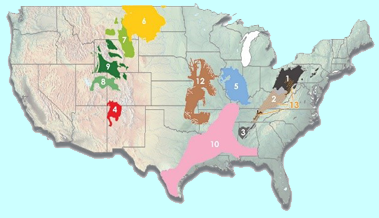
Resource Characterization and Technology Development
Resource characterization is a major objective of the Critical Minerals and Materials Program, from the fundamental molecular level to the resource deposit scale. Research efforts are focused on unconventional and secondary feedstocks, such as coal and coal refuse, coal fly ash, acid mine drainage, mine waste, oil- and gas-produced waters, and brines extracted as part of carbon sequestration efforts. These feedstocks are known to contain elevated concentrations of CMMs, potentially in economic quantities, however their occurrence and distribution is not well constrained. A key aspect of this work is the Carbon Ore, Rare Earth, and Critical Minerals (CORE-CM) Initiative funds coalition teams focused on addressing the upstream & midstream CM supply chain and downstream manufacturing of high-value, nonfuel, carbon-based products, to accelerate the realization of full potential for carbon ores and critical minerals within the U.S basins.

Critical Mineral Processing
NETL’s focus on CMM processing includes developing novel materials and processes to concentrate CMM streams from dilute sources. These include oil and gas produced waters, acid mine drainage (AMD), and mineral processing streams. Processing technologies include conventional and advanced extraction, separation, recovery, and purification process research, development, and demonstration (RD&D). The portfolio also focuses effort on the development of processing methods that reduce the amount of water required for processing and science that targets overall environmental performance of CMM operations.
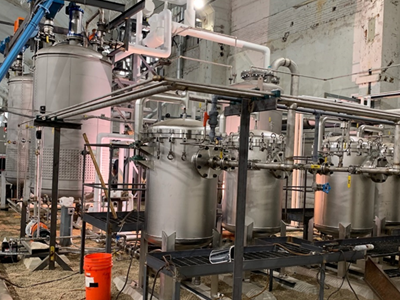
Advanced Critical Material Extraction Technology
Focused on RD&D to develop technologies that support innovation needs for responsible mining of critical minerals and transform the mining of critical minerals in the U.S. The major goals of this technology area are to eliminate open large open pit mining and extensive networks of underground tunnels to reduce the mining footprint. Major objectives to substantially reduce waste, water use, and greenhouse gas emissions currently associated with conventional mining practices. Key RD&D areas of interest include advanced drilling technologies, deployment of novel geophysical tools, autonomous subsurface operations, in-situ mining and processing, mine waste and tailing management, and mineral traceability.





